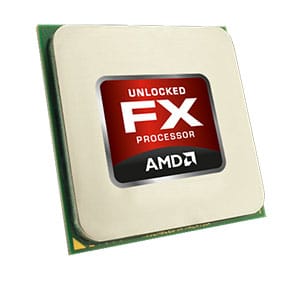Conclusion
Piledriver is what Bulldozer should have been in the first place. The FX-8350 puts AMD back on track, but not yet back in the game. If it were not for Intel’s exceptional high IPC and performance per watts ratio on Sandy Bridge/Ivy Bridge, AMD’s Vishera/Piledriver would have been a good successor to Bulldozer as it delivers performance gain and reduced power consumption. Judged by itself, Vishera is certainly a good step for AMD and is a capable chip.
Unlike Bulldozer, where the single threaded performance falls behind the older Phenom CPUs, the FX-8350 (Vishera) is able to deliver a comparable performance while improving upon the multi-threaded performance. On average, we noticed that the processor has about a 10% improvement over the FX-8150. Obviously, the performance is partly due to the combination of the higher clockspeed: FX-8150 is clocked at 3.6GHz, whereas the FX-8350 is clocked 10% higher at 4.0GHz. The second major factor is Piledriver’s improved architecture over Bulldozer. The higher clockspeed seemed to help out with its single-thread performance more while the architectural design seemed to further improve upon the multi-thread performance.
Ideally, what we really want is a chip that is not only good at heavy threaded tasks but also is able to deliver a tangible gain in the lightly threaded tasks. The reality of current computing is that many desktop applications and games are still not fully optimized to truly take the advantage of the CPU’s multiple-core computing power. Some games don’t even use two cores, let alone eight. Because of this, the eight core FX-8350 may not show a huge gain over the dual or quad core variant of the same Piledriver derivatives at the same clockspeed (ie. A10-5800K). However, if media transcoding, 3D Modeling (Cinebench), and data encryption are your primarily workloads, then the FX-8350 would be a great choice for you.
We are glad to see the drop in the overall idle system power consumption. The CPU stays in idle mode for a considerable amount of time and only revs up the clockspeed when needed so anything that can help to reduce the idle power consumption is good. The lower power consumption also translates into lower idle temperature.
Compared to what Intel has to offer, AMD is still lagging behind in the single threaded performance and AMD has conceded that in our meeting with the company. However, the multi-threaded performance for the chip is competitive enough against the Intel’s offering. The chip is able to perform somewhere between the Core i5 and i7 depending on the workload. In most cases, we see the FX-8350 performs about the same as the Core i5 2500K or faster. In fact, given the right workload (like data encryption) at requires higher clockspeed and heavy integer calculation, the FX-8350 may even come ahead of what Intel has to offer.
Considering the performance of the chip, AMD was smart enough to price the FX-8350 at $195 so that it is in direct competition against Intel’s Core i5 processors. The price seems fair to us. In gaming, Core i5 still has advantage over the FX-8350 unless the game titles you play are either GPU bound or heavily threaded enough for you to use all of the eight cores. For common tasks, either Intel or AMD should be sufficient for average users. If you are running older Phenom processors, AMD has finally released a good enough chip that is worth upgrading to. If you are shopping for a new PC this holiday season, we would suggest you think about what kind of task and software you would be doing primarily with your PC. The FX CPU has its strengths and would be well-suited if you can take its advantage. Additionally, as a platform, AMD often offers more bang for the buck for those with a budget.
Looking forward, AMD still needs to address its weakness in order to fully compete against Intel. With the Ivy Bridge and Sandy Bridge, we can see that desktop CPUs may not be clocked at higher than 4.5GHz even with a die-shrink. AMD probably won’t be able to crank up the clockspeed much higher than the 4GHz that is on the FX-8350 when the company transitions to the 28nm. If AMD does not improve upon its instruction per clock, it may have a hard time keeping up with Intel in the next round.
Another issue that AMD also needs to address is the power consumption for the chip. With Intel actively reducing the power consumption of the CPU (and the whole platform), AMD needs something that is high in performance per watts, and not just raw performance. The PC shift into more portable and low power consumption devices means that AMD needs something that can deliver a good performance per wattage in order to fit their chip into the changing market. We can see AMD has already begun working on reducing the idle power consumption. Hopefully Steamroller, the successor to the Piledriver, can make some considerable gains in the single-thread performance and improves upon its performance per watts ratio.
 Bjorn3D.com Bjorn3d.com – Satisfying Your Daily Tech Cravings Since 1996
Bjorn3D.com Bjorn3d.com – Satisfying Your Daily Tech Cravings Since 1996








